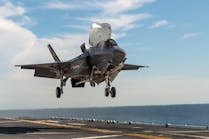(July 17, 2015) – The new travel lane on US 29 in Columbia will have “green” asphalt pavement but drivers will not be able to see a difference. The Maryland Department of Transportation’s State Highway Administration (SHA) is using 2,600 tons (5.2 million pounds) of recycled material on its $32.7 million widening project on northbound US 29 between Seneca Drive and MD 175 in Columbia, Howard County.
Master everything from OSHA regulations, to high-tech safety equipment in this FREE Special Report: Construction Safety Topics That Can Save Lives. Download it now!
The recycled material is called Foamed Asphalt, which is comprised of reclaimed asphalt pavement and cement. In general, foamed asphalt production involves injecting water and into a special chamber that contains millings from other resurfacing projects which causes the asphalt to foam and bind together. This produces a useable material that is 10 to 15 times the original volume of the millings. Crews then mix the material with Portland cement to create foamed asphalt. The recycled material will be used as a base course and will be the proper load-bearing strength after compaction.“Using recycled materials in road building and maintenance supports practical design principles,” said SHA Acting Administrator Douglas Simmons. “The amount of material in this case is about half the volume of water in an Olympic-sized swimming pool. Using less new asphalt and wasting less from other projects is an environmental benefit.” 




